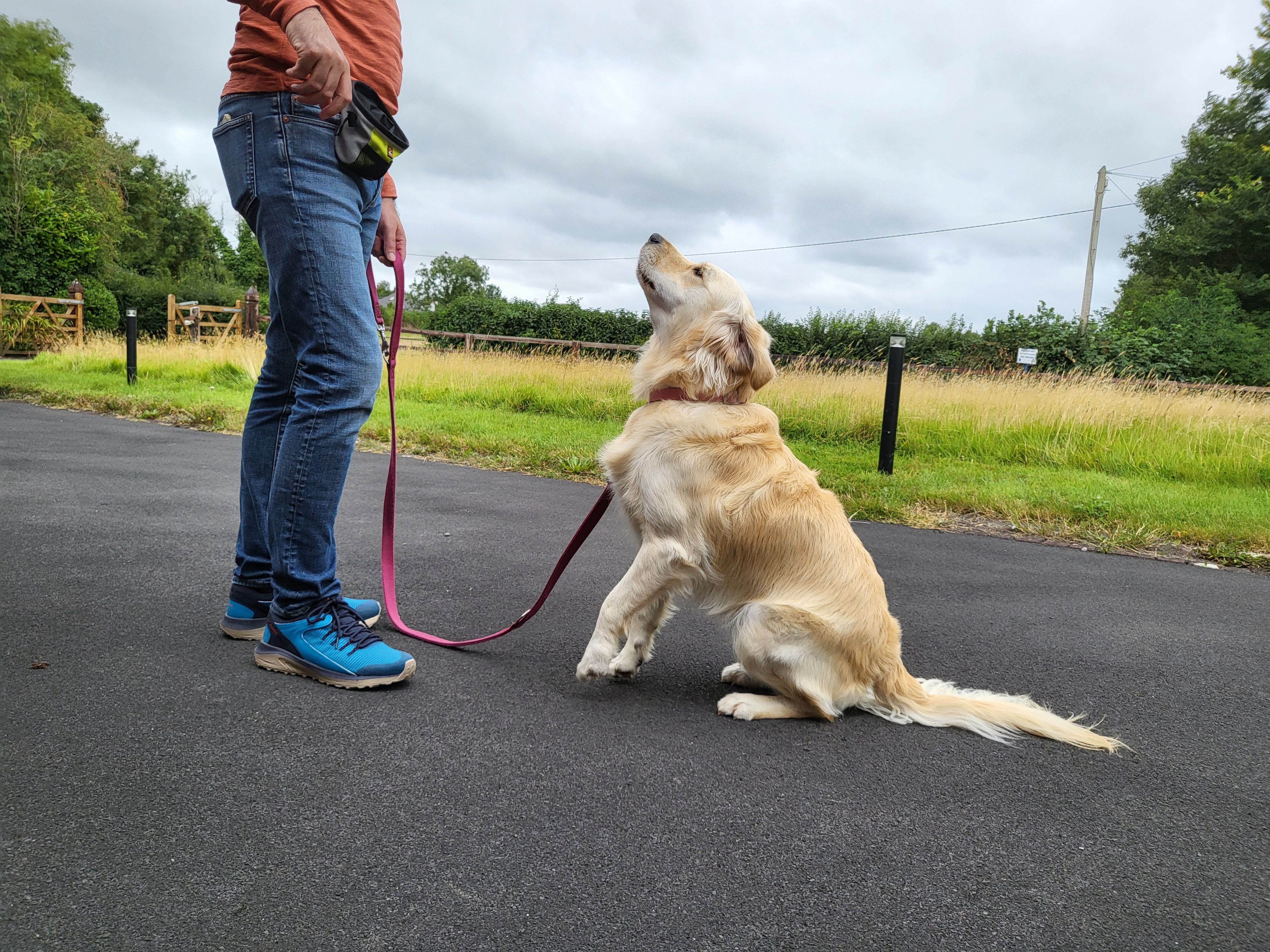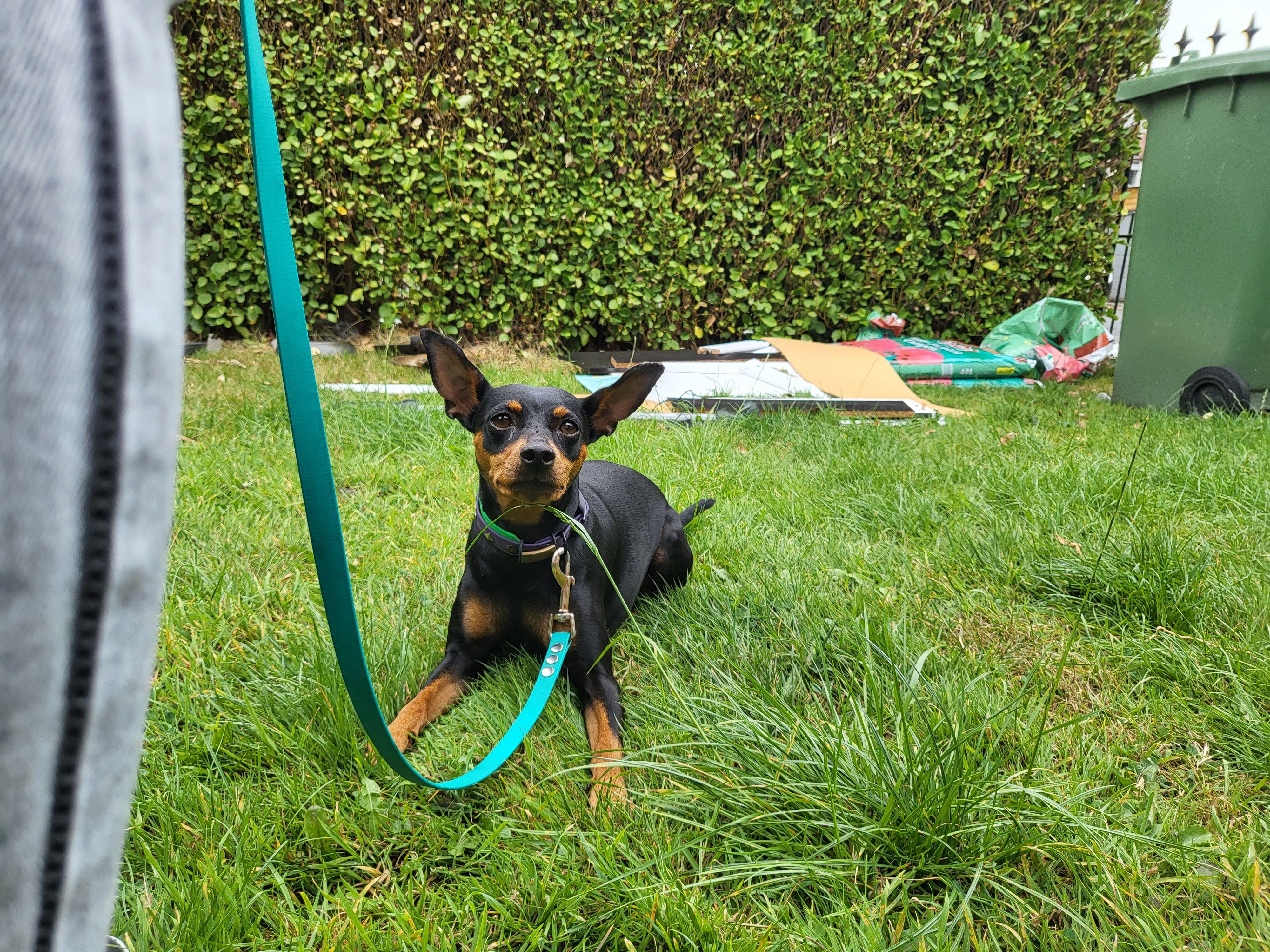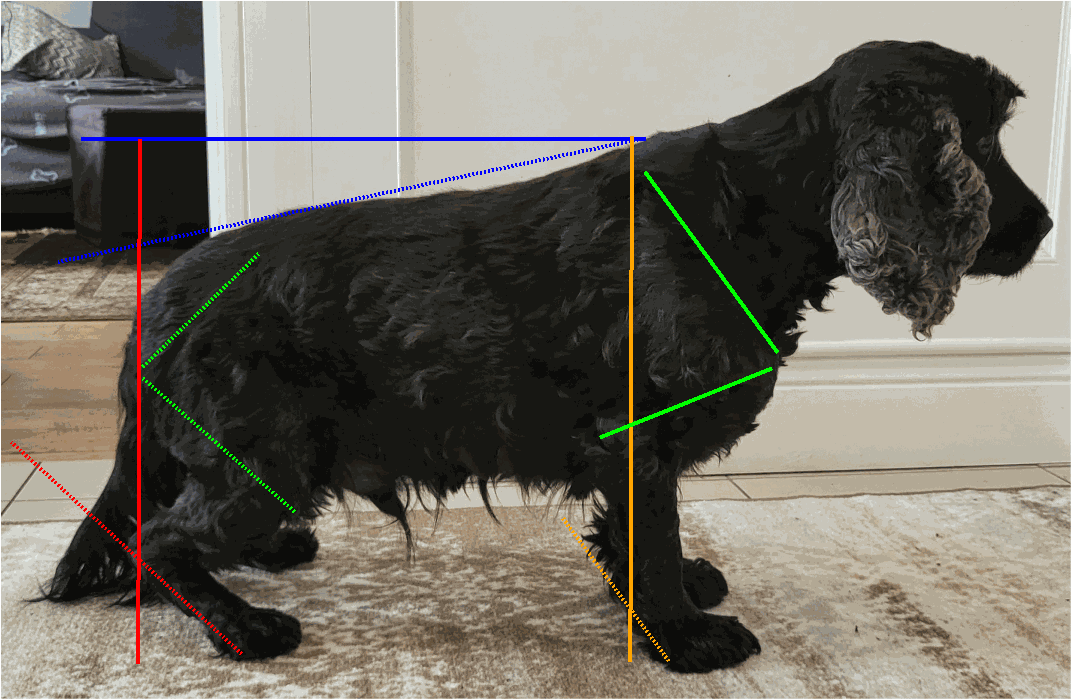Gait Assessments
Understanding motion and posture
We can't change behaviour if there is pain or discomfort underneath. Sometimes neither a physical check nor behaviour assessment alone will tell us there is pain there. We take a further step and look at the two together with an analysis of movement and stance to get a clearer view.
I started out my professional career as a theoretical physicist and shortly afterwards moved into a PhD in robotics with a focus on motion and the innate intentions in motion. From a mechanical point of view, bodies that are not properly balanced cause weight to be shifted and more force is applied to some areas over others. Whether that body is made of metal or skin and bone, this causes wear and tear and potentially failures. In dogs, people and any other animal how this wear and tear occurs or these points of failure manifest varies greatly. With our dogs we have the added issues of firstly, they can't tell us directly when something hurts, secondly they tend to put up with it and get on with life, and often the main sign of trouble is a change in behaviour.
Pain and behaviour
By analysing behaviour, making sure we understand what is going on and watching out for sporadic reactions or out of proportion reactions we can get a good idea of whether there may be a component of pain underlying a behaviour issue. We perform a gait assessment to look for any motion or posture based indicators of imbalance or improper motion. This allows us then to liaise best with the most suitable veterinary for that dog to work in parallel with our behavioural work.

What is a gait assessment?
A gait assessment is taking a lot of photographic and video data and analysing it to look for imbalances, changes in motion, or even specific pain events as the dog is moving or in static positions. We start with capturing video of walking and trotting on stable ground and may redo this on unstable ground depending on what is visible and what the behaviour analysis tells us. Also depending on the case we capture video of your dog travelling up and down steps along with turning, moving into a sit, stand or down and during toileting. If we can catch it, even a video of a dog shaking off can give us a lot of information.
We then take this information and analyse it looking for irregularities, imbalances, shift in motion, shift in weight and even coat distortions. We are not just looking for skeletal imbalances but soft tissue also.
Why bother doing a gait assessment?
A very important part of training and behaviour modification is the understanding that we cannot change behaviour or train through pain. Physical and emotional well-being must always come first. A large part of many of our behaviour modification programmes is working on individual and breed-based interests to help improve your dog's mood and turn pessimism to optimism which is key to helping recover or manage any physical complaints. We will also make sure that your dog is not doing anything that might exacerbate any underlying physical issues they may have.
Daniel S. Mills of the University of Lincon has devoted a huge amount of his research efforts to better understand pain and behaviour and how prevalent underlying pain and discomfort may be. He estimates that about 80% of behaviour cases have some pain or discomfort component. In the first place, we want to get your dog out of pain or discomfort as quickly as possible for their own mental and physical well being. Additionally, we want to reduce your costs going through training and behaviour modification. By working on the physical side in parallel with our work, we can reduce the number of sessions needed as we are not fighting against the emotional toll that physical issues may take on your dog.


How to get a gait assessment
For behaviour cases we will always do a gait assessment as part of the over arching behaviour assessment. The behaviour assessment process is a very large and detailed one to make sure we don't miss anything and that we get helping your dog as quickly and properly as possible.
We can also perform gait assessments in cases where you are working with a behaviourist or trainer already but who would like you to get a bit more information so that they can help you with your dog. If you have any questions or would like to have a gait assessment performed, please get in touch and we will be happy to help.
(Picture: Riley showing lowered hocks and knees with weight shifted onto his front legs and his shoulder and upper fore limbs taking the brunt of the weight that his hind legs cannot currently manage.)
